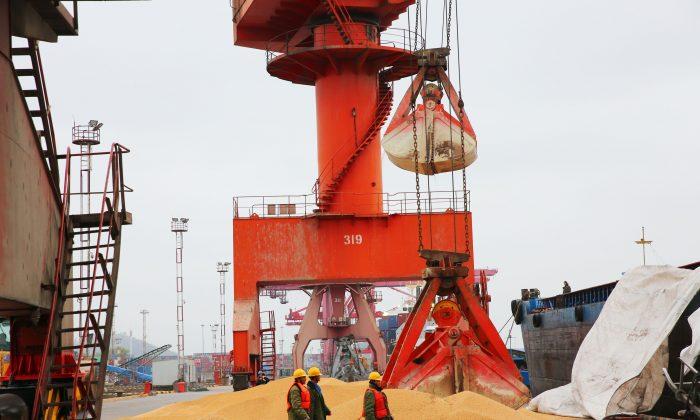News Analysis
The U.S. Navy’s Second Fleet that was disbanded during the Obama years has been reactivated to full-operational capability to meet challenges, such as China’s increasing activity in the Arctic.
The Navy’s Second Fleet was responsible for protecting American interests from the northernmost point of the Earth to the Caribbean, with about 126 ships, 4,500 aircraft, and 90,000 sailors. The fleet was targeted by the Obama administration as a relic of the U.S.-Soviet Cold War on Aug. 10, 2010, and then deactivated in 2011.
The Chinese Communist Party (CCP) in mid-October 2010 began debating plans to gain “new territories” in the Arctic as a focus for its Twelfth Five Year Plan published in 2011. Mentions of Arctic initiatives and China as a “near-Arctic state” began appearing in official state-planning documents in 2015, culminating in the region being included by Chinese leader Xi Jinping in his Jan. 25, 2018 “One Belt, One Road” (OBOR, also known as Belt and Road Initiative) update speech that embraced a Chinese vision of a “shared future” along the “Polar Silk Road.”
Beijing’s Arctic exploitation has been overshadowed by what the U.S. Congressional Research Service terms the new great power struggle driven by China’s militarization of the South and East China seas to enforce its “Nine Dash Line” claims for exclusive economic dominance over 2 million square kilometers (sq. km) of Asian maritime waters.
China’s Polar Silk Road gambit that involves up to 21 million sq. km of the Earth’s most unknown and underdeveloped maritime regions has set off alarm bells over national security concerns for many northern nations. Niklas Granholm of Sweden’s Defense Research Agency warned, “China’s increasing activity in the Arctic has been met with concern that it may lead to a significant redrawing of the region’s geopolitical map.”
Arctic domination could potentially be very lucrative. The U.S. Geological Survey estimates the area holds 30 percent of global natural gas and 13 percent of oil reserves. New technology and climate change is expected to open year-round regional transit by 2050. China’s strategic ally Russia has already lodged Arctic territorial claims with the United Nations for 1.2 million sq. km of sea shelf that extends 650 km from its shoreline.
The Trump administration began reestablishing the Second Fleet on July 1, 2018 with just 11 officers and four enlisted personnel. But by September 2019, the Second Fleet had grown to nearly 30 ships and 120 aircraft.
One of the Second Fleet’s prime missions is dealing with Chinese and Russian technology advances that have led to “an undersea environment characterized by ubiquitous passive sensors, quiet submarines, supersonic and hypersonic anti-ship missiles (ASM), smart mines, and the increasing use of paramilitary forces,” such as China’s “Little Blue Men” that regularly harass shipping in the South China Sea.
Commander of U.S. Naval Forces Europe and Africa Adm. James Foggo recently told reporters that global submarine competition is heating up: “This has been one of the busiest years that I can remember, and I’ve been doing this since 1983,” he said. “... Russia has continued to put resources into their undersea domain. It’s an asymmetric way of challenging the West and NATO alliance and actually they’ve done quite well.”
Coinciding with the Second Fleet achieving full operational capability, the non-partisan Center for the Strategic and Budgetary Assessment (CBSA) issued a report titled: ‘Taking Back the Seas, Transforming the U.S. Surface Fleet for Decision-Centric Warfare.” The CBSA argues that the U.S. Navy must become more agile and cost effective, because it is still weighted toward large combatants that are too expensive and manpower-intensive to achieve the numbers needed for distributed operations “during combat against a great power like China.”





